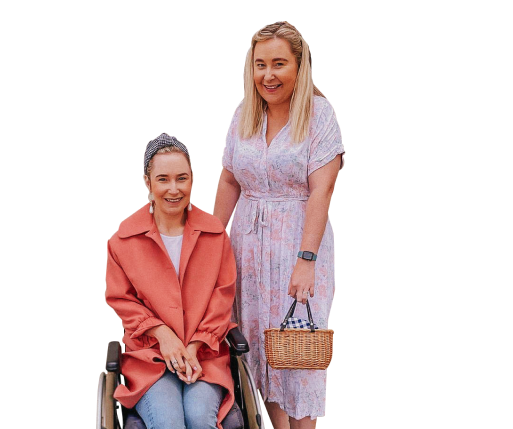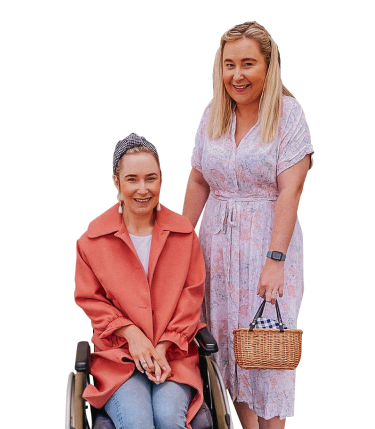What can you do for your patients with FOP?
Patients and their caregivers should be educated on the importance of preventing heterotopic ossification (HO), where possible. This includes avoidance of medical procedures that could lead to a
flare-up
Patients with FOP experience sporadic and unpredictable episodes of soft‐tissue swelling, pain, reduced movement, stiffness and warmth, referred to as ‘flare‐ups’.13
(including surgery, biopsies, intramuscular injections and invasive dental procedures) and prophylactic measures against falls, respiratory decline and viral infections.1
Key recommendations from the International Clinical Council (ICC) guidelines1*

The diagnosis of FOP is clinical but requires genetic confirmation

If FOP is suspected, all elective procedures such as surgeries, biopsies, and immunizations should be deferred until a definitive diagnosis is made

Each patient should have a primary physician who is willing to consult with an FOP expert and help coordinate a local care team

Patients and their families should be informed about the ICC, the International FOP Association (IFOPA), and country-specific support groups at the time of diagnosis
The ICC is an autonomous and independent group of internationally-recognized physicians who are clinical experts in FOP.
The guidelines were developed by 21 ICC members and five consultants from 14 countries.1,2
Disclaimer: These recommendations are not the complete guidelines. Please refer to the ICC website to download the full guidance.
IFOPA can provide advice on FOP management, as well as practical and emotional support for your patients3

IFOPA is a non-profit organization that provides patient support, funds research and raises awareness of FOP worldwide.3
The IFOPA website has a host of resources, including information about FOP diagnosis, treatment and clinical trials, and an emergency toolkit to enable patients to quickly share their medical information in an emergency situation.4,5
Optimal care for patients with FOP requires a multidisciplinary approach
Care for patients with FOP requires many medical specialties and a coordinated, multidisciplinary approach is essential for high-quality patient care.1
A patient’s multidisciplinary care network should be coordinated by their primary care physician, who is responsible for organizing a local care team and consulting with FOP experts where necessary.1


Care for patients with FOP requires many medical specialties and a coordinated, multidisciplinary approach is essential for high-quality patient care.1
A patient’s multidisciplinary care network should be coordinated by their primary care physician, who is responsible for organizing a local care team and consulting with FOP experts where necessary.1
Clinical trials in FOP
Ipsen have an ongoing clinical trial program in FOP
Other trials in FOP are underway or completed
*Inclusion of a clinical trial in the list does not constitute or imply its endorsement, sponsorship or recommendation by Ipsen. Specific entry requirements exist for all trials, and not all patients may be eligible.
Frequently asked questions from healthcare professionals
A review of experimental models of FOP suggested that a timely disease diagnosis could extend patient longevity, by prompting the appropriate prevention of flare-ups and avoidance of surgical procedures and iatrogenic injuries that accelerate heterotopic ossification (HO).6 However, according to recent IFOPA registry data, patients typically receive a diagnosis on average 1.5 years after symptom onset, following consultation with an average of 3.3 different healthcare professionals.7 While the diagnostic delay appears to have shortened in recent years,7 increased education among physicians is needed to aid early diagnosis and avoid unnecessary treatment that may exacerbate disease progression.8
It is recommended that all patients have a primary care physician (PCP) who is willing to consult with an FOP expert and help to co-ordinate a local care team.9 Details about the patient’s case and any other pertinent FOP information should be made readily available to the PCP and other local physicians involved in their care.10 An emergency medical form can be provided to the patient to help with continuity of care; the form provides critical care and personalized medical information to assist any healthcare professional in providing the best care possible for that patient. A customizable form developed by the IFOPA and the ICC is available at https://www.ifopa.org/personalized_medical_form.11
Episodes of heterotopic ossification (HO) usually start in childhood and recur throughout the patient’s life.12 While FOP progresses most notably around flare-ups, ~50% of patients report HO formation in the absence of discrete flare-ups.13 Typically, HO begins in the dorsal, proximal, axial and cranial regions of the body (neck, shoulders, back) and progresses into ventral, caudal and distal regions (trunk and limbs).12,14,15 HO develops into ribbons, sheets, and plates of extra bone throughout the body and across joints, progressively restricting movement.12,16 Once ossification occurs, it is permanent. Consequently, disability in FOP is cumulative and most patients become immobilized and confined to a wheelchair by their third decade of life.12,17
Read a list of FAQs for the answer to these questions and more
1. Kaplan FS et al. Proc Intl Clin Council FOP 2022;1:2–127. 2. The International Clinical Council on FOP. International Fibrodysplasia Ossificans Progressiva Association. Available at: www.ifopa.org/international_clinical _council_on_fop. Accessed July 2023. 3. International Fibrodysplasia Ossificans Progressiva Association. Available at: www.ifopa.org. Accessed July 2023. 4. Preparing your emergency medical information toolkit. Available at: www.ifopa.org/preparing_your_emergency_toolkit. Accessed July 2023. 5. For medical professionals. International Fibrodysplasia Ossificans Progressiva Association. Available at: www.ifopa.org/for_medical_professionals. Accessed July 2023. 6. Qi Z et al. Intractable Rare Dis Res 2017;6:242–48. 7. Sherman LA et al. Presented at ASBMR Annual Meeting, 11–15 September 2020. 8. Kitterman JA et al. Pediatrics 2005;116:e654–e661. 9. Kaplan FS et al. Proc Int Clin Council FOP 2021;2:1–127. 10. Di Rocco et al. Orphanet J Rare Dis 2017;12:110. 11. IFOPA. Personalized Emergency Medical Form. Available at: https://www.ifopa.org/ personalized _medical_form. Accessed November 2022. 12. Pignolo RJ et al. Genet Med 2022:doi:10.1016/j.gim.2022.08.013. 13. Pignolo RJ et al. J Bone Miner Res 2016;31:650–6. 14. Connor JM & Evans DAP. J Bone Joint Surg Br 1982;64:76–83. 15. Pignolo RJ et al. Orphanet J Rare Dis 2011;6:80. 16. Kaplan FS et al. Clin Orthop Relat Res 1994;304:238–47. 17. Baujat G et al. Orphanet J Rare Dis 2017;12:123.


